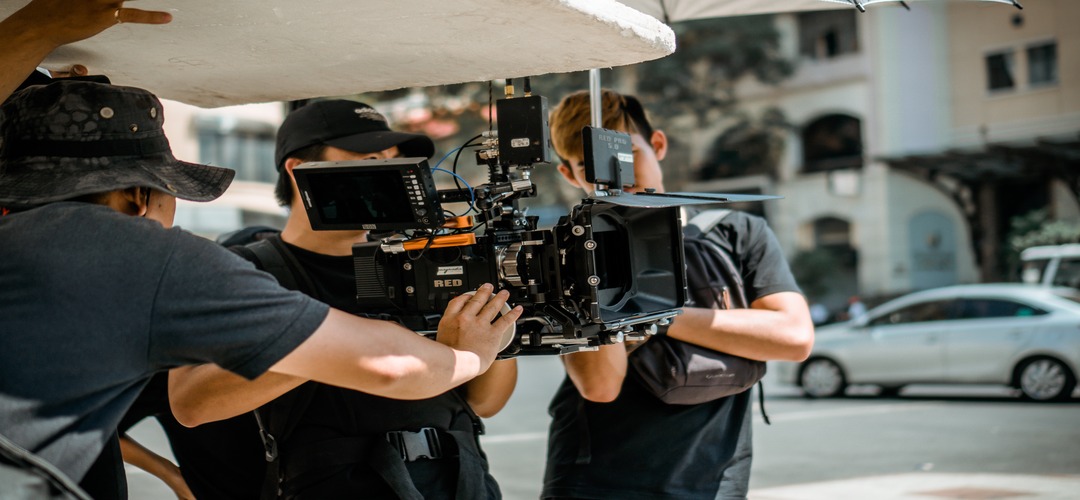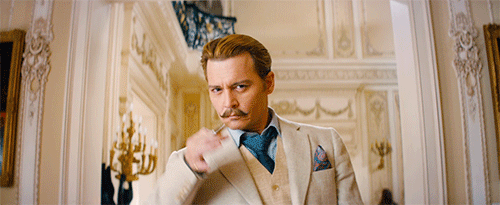Ari Aster, most known for his 2018 horror film Hereditary, wrote and directed six short films before his big-screen debut. It was all in preparation for his upcoming film Midsommar.
Still, before you dive right into his new flick, that comes out July 2, know that the NYC-born director has come a long way to arrive at the critical acclaim he’s received for his perspective on the horror genre.
It’s hard for one to not notice the come up. Recently, Get Out director Jordan Peele praised Aster for his directorial brilliance and even described Midsommar as “the most idyllic horror film of all time” in an interview with Entertainment Weekly.
So, we had to put you on and let you recognize the creative glow up. Here are three shorts from the mind of Aster to check out before heading to theaters.
The Strange Thing About the Johnsons (2011)
This film was Aster’s first foray into troubled family dynamics, as well as the first short of his to go viral due to its shocking subject matter: The Strange Thing About the Johnsons is centered upon the sexual abuse a father suffers under the hands of his son.
Taking inspiration from directors like David Lynch, Aster explores the seedy underbelly of suburban life, in which every character is willing to turn a blind eye to just about everything in order to maintain the air of perfect, white-picket, normality.
People were mostly shocked by Aster’s decision to put an African American family as the center of such a controversial story. As a white director, Aster said that the fact that the family in The Strange Thing About the Johnsons is black was purely coincidental, as he set forward in making the film with the mindset of casting his good friend Brandon Greenhouse as the son.
Aster elaborated upon the implications of this decision with Filmmaking Magazine, saying:
“The color of the family in that film was strictly incidental… but it would be disingenuous to say that the film is totally color blind. That question alone became really interesting to me: Is it OK for a white guy to make a film about black people that isn’t about their blackness, that isn’t in any way patronizing, and that skirts politics but at the same time is an ugly portrait of humanity? Can you do that without being political?”
With The Strange Thing About the Johnsons, Aster is trying to communicate the universal nature of trauma in the context of the family unit. Like in Hereditary, paralyzing suffering is something that can be passed down no matter the circumstance it is presented in.
Writing for Huffington Post, abuse survivor Malcolm Harris emphasized the importance of The Strange Thing as Aster’s debut into the filmmaking world, writing:
“Mr. Aster had struck movie making gold by becoming equal parts relevant, provocative and most importantly, polarizing.”
Munchausen (2015)
Munchausen or The Trouble with Mom, was formally released as a Vice short in 2015. This is a silent, Disney/Pixar-esque exploration of a mother willing to do anything to keep her son from going to college and leaving the family home. Munchausen is titled after the syndrome of the very same name.
Munchausen syndrome is a mental illness in which a person acts as if they have a physical/mental disorder when they have really caused all their own symptoms. In Munchausen, the mother has what is called Munchausen by proxy (MSBP), in which a caregiver makes up or causes illness in someone under their care.
Stories concerning people with MSBP and those affected recently has had a surge in popular attention with series like The Act and Sharp Objects. Seeing as Aster made this well before either premiered, it seems as though he was ahead of the curve.
It seems obvious that Aster the same brain behind The Strange Thing About the Johnsons and Hereditary would tackle a film with this kind of subject matter.
Munchausen examines what it means to purposefully (and permanently) hurt the ones you love most in order to fulfill selfish desires, as well as the very real capability we all have to do so.
C’est La Vie (2016)

In 2016, Ari Aster released two shorts which he called his “portrait series.” These shorts feature characters directly speaking to the camera as if the audience was just another character in their world.
C’est La Vie is the second film of the series, and what I personally believe to be the most luminous.
It follows a homeless man, Chester Crummings, played by Bradley Fisher, as he delivers a disjointed tirade against life in Los Angeles and then America as a whole.
The most incredible gradient that comes with the progression of Crummings’s story is the steady decline in the frantic nature of its tone. The short starts off chaotic, with a nearly oppressive beat that turns Crummings’s rant into some kind of demented freestyle.
“I still have a list of my policies if I ever did or ever do win mayor,” Crummings tells the audience as he grooms the lawn of a pretty house he will later rob and kill the inhabitants of.
“I’d start by tearing down every fuckin’ billboard in the country and the ones that are left standing would say horrible horrible shit that would just make you puke. Then I’d shut down every TV station, make everyone live in the forest, and every CEO of every corporate shithouse would have to cut their heads off in front of everyone. And we’d still have a long fuckin’ way to go!”
However, leading in with this kind of chaos makes the moments of calm even more powerful.
As the short progress and Crummings becomes more and more despondent, the viewer is left with no music and only the diegetic background noises of busy traffic and people talking. There are no more “crutches” to view Crummings as anything but the actual person he is, fictitious or not.
The first moment of complete silence comes with Crummings sitting on a bench in a public park at sunset (or sunrise, it is uncertain). He is looking out over a body of water, his back turned from the camera for the first time, and begins to tell us perhaps the first honest, most clearly articulated, story about how he came to be where he was.
He tells us about his uncle’s mental illness as well as his own, and how it destroyed his childhood. He delivers this portion of his monologue in a gentle, soft voice.
Cutting to his closing monologue, Crummings, standing in the middle of the street, he says in the same voice:
“You know what Freud says about the nature of horror? He says that it’s when the home becomes unhomelike. Unheimlich. And that’s what this whole place has become. This whole time, and fuckin’ country, and everything else. It’s unheimlich.”
The ending carries the same despondent weight, however, is as hopeful as it can be without breaking the mold. It’s a nihilist vision of an artist’s desire to shape something that defies the bleak nature of the world around them, and it feels as though Aster is bursting through Crummings in order to directly speak with his audience.
From the promo material that has been released for Midsommar, it looks like family dynamics might be taking a bit of a back burner in Aster’s new work–although it is hinted that a family tragedy is what incites the events of the film itself.






































